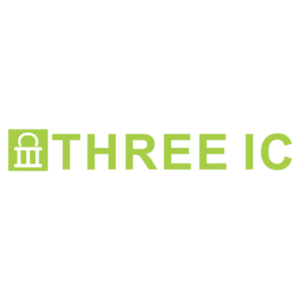

Now more than ever, organizations must secure their IT infrastructure proactively, as security threats evolve rapidly, challenging traditional on-premises solutions. This blog post explores an innovative approach: Security as a Service (SECaaS). We will cover what SECaaS is, how it works, its importance in today’s IT security landscape, its benefits, and how it compares to traditional measures. Let’s dive into understanding SECaaS.
Security as a Service (SECaaS) is an innovative subscription model where security services are delivered by a dedicated provider. It’s a key player in the IT world’s “as a service” trend, which includes offerings like software, platforms, and infrastructure. With SECaaS, you can transition from handling security in-house to leveraging the skills of specialized security service providers.
SECaaS is now vital for modern IT security. As businesses grow digitally, potential vulnerabilities also increase. This calls for adaptable security solutions, and SECaaS offers just that. It provides security as a dynamic service that evolves with an organization’s needs and the ever-changing security terrain.
SECaaS operates within the cloud, delivering security services over the internet. This model lets you access high-quality security tools via a web interface from your SECaaS provider, bypassing the need for local software installation and maintenance.
SECaaS offers a broad range of services, from identity and access management (IAM) to security information and event management (SIEM), email security, intrusion detection, vulnerability scanning, and data loss prevention. Regardless of your security needs, a SECaaS solution likely exists.
Leveraging the cloud, SECaaS ensures scalability, flexibility, and cost-effectiveness. It allows easy adjustment of services based on your changing security needs. The SECaaS provider handles updates and maintenance, ensuring you always benefit from the latest security technologies and threat intelligence.
IT security is critical in our data-driven world, where even minor breaches can lead to significant business losses and damaged reputations. Here, SECaaS plays a pivotal role in enhancing IT security, providing several unique advantages.
Firstly, IT Security as a Service allows companies to stay abreast of the latest security threats. Cybersecurity is a dynamic field, with new vulnerabilities and attack methods constantly emerging. By partnering with a SECaaS provider, businesses gain access to experts who live and breathe security, ensuring they are prepared for the latest threats.
Secondly, IT Security as a Service allows for scalability. Whether a business is growing fast or navigating a slow period, SECaaS can adapt to its current needs. This adaptability extends to the financial side as well, as the service-based model often means costs are variable rather than fixed.
Thirdly, IT Security as a Service brings efficiency. By entrusting security operations to a dedicated provider, in-house IT staff can focus on strategic initiatives and innovation. Furthermore, security processes are streamlined since they are managed through a central platform in the cloud.
The benefits of security as a service are manifold, extending beyond the immediate advantages of enhanced security. The examples of security as a service in action are as diverse as the organizations that utilize it. Here, we delve into some of the significant benefits that come with integrating SECaaS into your business model.
With a SECaaS provider, your organization can leverage the skills and knowledge of security experts without needing to recruit and train an in-house security team. The provider’s team is up-to-date on the latest security threats, solutions, and regulatory requirements, ensuring your business stays compliant and secure.
One of the primary benefits of SECaaS is cost savings. With this model, you can avoid the substantial capital expense of buying and maintaining security hardware and software. Instead, you pay a predictable monthly or annual fee for the services you need.
SECaaS allows you to scale your security services up or down as needed. Whether you’re a startup experiencing rapid growth or a large enterprise managing a complex IT landscape, you can adjust the level of service to match your current situation.
Security as a Service providers typically offer round-the-clock monitoring and incident response services, reducing the time between a potential security event being detected and action being taken. This swift response can be crucial in mitigating damage and preventing data breaches.
Many SECaaS providers offer services focused on business continuity and disaster recovery. These services ensure that, in the event of a disaster, your critical systems and data can be quickly restored, minimizing downtime and disruption.
These benefits clearly demonstrate the value of integrating SECaaS into your business model. In the following section, we’ll explore how these benefits translate to a comparison with traditional, on-premises security measures.
If we reflect on the history of IT security, it becomes evident how far we have come. Traditional on-premises security solutions, while reliable, had their own set of challenges. These ranged from high costs of hardware, to continuous monitoring requirements, and to needing a dedicated IT security team to manage them. However, the advent of Security as a Service transformed the landscape, presenting a more cost-effective, scalable, and efficient solution.
Traditional security tools required organizations to purchase hardware and software, install it on their systems, and regularly update them to ensure optimal performance. These systems often had limited capabilities and were static in their ability to adapt to changing security needs.
On the other hand, SECaaS providers deliver security services via the cloud, which enables scalability and flexibility. This model allows organizations to access advanced security tools and services through a web interface without the need for in-house infrastructure or a large cybersecurity team. It’s a shift from capital-intensive, on-premises security solutions to a more manageable, subscription-based model.
The following are some advantages that underline why SECaaS has an edge over traditional security measures:
SECaaS solutions offer access to the latest security technologies. Providers regularly update their tools and services to stay ahead of the evolving threat landscape. In contrast, with traditional security measures, keeping up with the latest developments often involves significant effort and cost.
SECaaS providers typically monitor security events in real-time and can react swiftly to potential threats. In a traditional setup, constant monitoring can be labor-intensive and may not be feasible for smaller organizations.
With a SECaaS provider, you get access to a team of security experts, ensuring you always have the right skills and knowledge at your disposal. In contrast, building a similar level of expertise in-house can be costly and time-consuming.
Selecting the right SECaaS provider is an essential step toward strengthening your organization’s IT security posture. Here are key factors to consider:
Check what security services the provider offers. The list may include identity and access management (IAM), security information and event management (SIEM), email security, intrusion detection, vulnerability scanning, and data loss prevention among others.
Consider how well the provider’s services can scale with your organization. The ideal SECaaS provider can adapt to your changing security needs and business growth.
Research the provider’s expertise and reputation in the industry. Look for customer reviews, case studies, and any industry awards or recognitions.
Ensure the provider complies with relevant industry regulations and holds necessary certifications. This is particularly important for organizations in regulated industries such as healthcare or finance.
Inquire about the provider’s support availability and incident response times. Remember, in the event of a security breach, every minute counts.
Wrapping up our discussion, we’ve uncovered that Security as a Service, or SECaaS, is a forward-thinking and effective approach to tackling the complexities of IT security in our progressively digital society. Harnessing the considerable power of cloud technology, SECaaS equips businesses with access to the latest security technologies, expert guidance, and scalable solutions that grow with your organization.
When juxtaposed with traditional security methods, it presents a remarkable degree of adaptability and economic efficiency. It’s important to acknowledge that SECaaS is a significant asset in fortifying your cybersecurity defenses, yet it doesn’t present a blanket solution. It’s critical to sift through available options and discover the perfect SECaaS provider that best aligns with your organization’s unique needs and ambitions.
Regardless of the size of your company, be it a fledgling startup or a large-scale enterprise, adopting SECaaS can tremendously enhance your security stance, equipping you with the capability to anticipate and deflect potential threats.
In the dynamically changing digital environment, the question is not if you’ll encounter a security incident but rather when. Hence, it becomes absolutely vital to establish a resilient and proactive security strategy. This is where Security as a Service emerges as a key player in crafting that strategic defense.
If your organization is aiming to amplify its IT security, it’s worth considering the incorporation of Security as a Service into your operations. Leverage the advantages of SECaaS with our SOC security services that give you flexibility and can be customized to align with your precise needs. So, why delay? Learn more about security as a service with THREE IC. We leverage world leading technology with our partner security solution from Sangfor, and along with our expert IT support services, your organization can have a solid and proactive security posture. Contact us today and embark on your journey into the realm of SECaaS, and take a stride towards a future that’s secured and protected.
In the SECaaS model, security services are typically delivered via the cloud. This means that rather than having security software installed on each device, security services are accessed through a web interface. This cloud-based model allows for greater scalability, flexibility, and ease of access. Furthermore, it reduces the burden on your IT infrastructure and staff, as updates and maintenance are typically handled by the SECaaS provider.
Yes, SECaaS can indeed help secure mobile devices and web applications. Many SECaaS providers offer mobile device management and web application security as part of their service offerings. This is crucial in today's digital environment where mobile devices are ubiquitous and web applications are a common target for cybercriminals. Implementing SECaaS can help ensure your mobile and web assets are adequately protected against potential threats.
Many SECaaS providers offer compliance management as part of their services. This includes tools and features designed to help you meet specific regulatory requirements. For instance, some providers offer features for managing data privacy, which can be useful for organizations subject to regulations like GDPR or CCPA. With SECaaS, you can also generate comprehensive security reports, making it easier to demonstrate your compliance to auditors.

THREE IC, a prominent provider of Cyber Security and IT solutions, produces the majority of the blog posts featured here. These articles are authored by a team of professionals employed at THREE IC, including content writers and marketing experts. They are dedicated to creating informative content on a wide range of subjects that are relevant to our readers.
Our team ensures that the published articles are accurate and beneficial for our clients and partners, helping them stay informed about the latest trends in Cyber Security and IT and understand how these advancements can benefit their organizations.

address
address
TEL
+65 XXXX XXXX
info@threeic.com
address
Singapore Address here
address